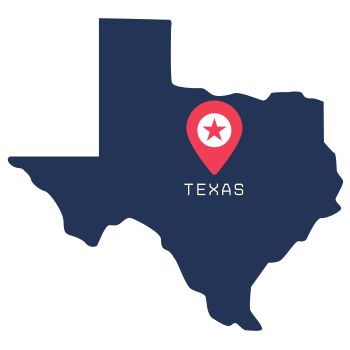News and Commentary from one of Torrance’s leading therapists.
Non-binary gender identification is effecting not only those wishing to identify differently – but also everyone around them. Caroline Burns explores whether these effects are helpful or harmful in the letter she wrote for this month’s newsletter.
After his assistant reads the letter, Dr. Regan, Psy.D. shares some recommendations on how to deal with stress related to the recent changes in society.
To learn more, watch the video.
Read below for complete letter:
“During California’s COVID-19 mandatory stay-at-home order last spring, my online Spanish IV professor kindly asked everyone to announce their preferred pronouns along with their name. The current choices available to attending students were “he, she, they, ze” and “ey.” Feeling uncomfortable and a bit confused to the definition of “ze” and “ey,” I stated my name and the seemingly obvious pronoun of “she.”
The experience, although eye-opening, left me with more questions than answers. Were other students feeling uncomfortable? Why did I care about stating my pronouns? Will I have to announce my sexual preference to the Spanish class? How did the approximate .5-.7%1 trans population dictate greetings for the other 99.5%? Can I be sensitive and accepting to all people including the trans-gender population while still respecting my own wishes? Are these recent changes helping or hurting teenage populations?
Two years ago, our distinguished blue-ribbon Oak Park School District decided to mandate gender fluidity instruction to all students from elementary to high school, regardless of parental approval. Children as young as six were introduced to the “Blue Fish/Red Fish” literature. The book they chose discussed how some fish are blue but feel red, while other fish are red but feel blue. To make matters worse, the more advanced curriculum was added to the health classes introducing prepubescent minors to confusing sexual identity issues that are limited to a very small portion of our population. I would like to add that if we are going to introduce our kids to the exceptions then we should also include the feelings and thoughts of heroin addicts, self-harmers, bulimics, anorexics, alcoholics, thumb-suckers and the de-transitioners (the individuals who regret their original transition). Why should only one minority get all the attention?
If the idea behind promoting transgender behaviors is to influence teenage thought, then it’s working. On June 27th, 2020, author Abigail Shrier wrote the article for the New York Post “How ‘peer contagion’ may play into the rise of teen girls transitioning,” discussing how the rate of adolescent girls identifying as transgender has sky-rocketed2. One study suggests that, between 2016 and 2017, “the rates of gender dysphoria for teenage girls are up 4,400 percent over the past decade”3. This phenomenon among teenagers may be due to peer contagion brought on by anxiety and depression related to the onset of puberty. Now that gender journeys are celebrated at the school level, teenage girls are finding comfort in this new community.
Understandably, high school and college are times for personal growth. However, the problem we are facing is that teenage girls as young as 13 or 14 are being allowed to take life-changing hormones. In addition, they are consoled by the numerous for-profit pediatric transgender clinics opening around the country. Should a hormonal teenager be making such a radical, irreversible decision? The surgical intervention for gender transformation is permanent and drastic to say the least.
My dear friend has a trans child. When we first met, her child identified as “he/him”, his gender assigned at birth. Before the pandemic, he decided the pronoun “they” was more appropriate. We had long discussions as to my friend’s built-up anger at people not respecting this new identity and making slips with “he/she” identifications. Now we find ourselves mostly beyond the pandemic and, to our surprise, her child has settled on identifying as “she/her”. Regardless of pronouns, names or identifications, we support this family. Honestly, however, I am having a hard time keeping up with the changes. My kids are completely confused. In the end, they didn’t even notice. They play together regardless of the names, pronouns or gender identity.
While teenagers are grappling with puberty and teenage angst, the rest of us are just trying to stay afloat. The other day my son came home from shopping with his uncle at Macy’s to report what he called a “terrifying” and “unsettling” encounter. While in the men’s department, he walked around the corner to come face-to-face with a life-size poster of a fully-bearded trans man in a cropped tank top, bra, and short cut-off Levi jeans that only a teenage girl would be seen wearing. Since then, he hasn’t been able to get this image out of his head. How do I explain the normality of this poster and not to worry?
Are we all required to change for every minority? Is fear driving us all to comply? As clearly seen with the Covid pandemic, crowd mentality drove the bus regardless of scientific data and findings. Every healthy person was detained at home for long periods of time regardless of mental health and financial concerns. Representatives were afraid to speak up for fear of getting “cancelled.” Is the same thing going on here? Are small minorities dictating the education of the majority? Everyone wants to be inclusive and sensitive, but is this the way?”
References:
1: Jody L. Herman, Andrew R. Flores, Taylor N.T. Brown, Bianca D.M. Wilson, Kerith J. Conron, “Age of Individuals Who Identify as Transgender in the United States”, UCLA School of Law William Institute, January 2017
2: Abigail Shrier, “How ‘peer contagion’ may play into the rise of teen girls transitioning”, New York Post, June 27, 2020
3: Abigail Shrier, “How ‘peer contagion’ may play into the rise of teen girls transitioning”, New York Post, June 27, 2020

